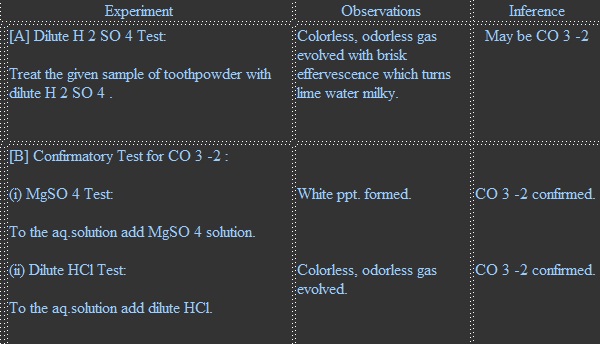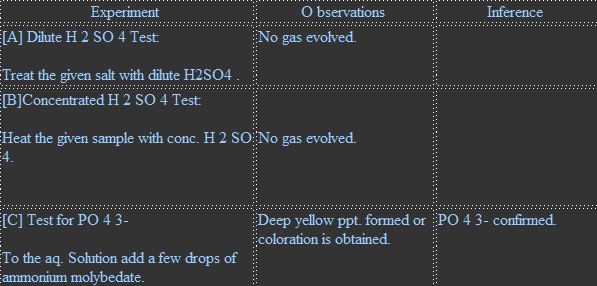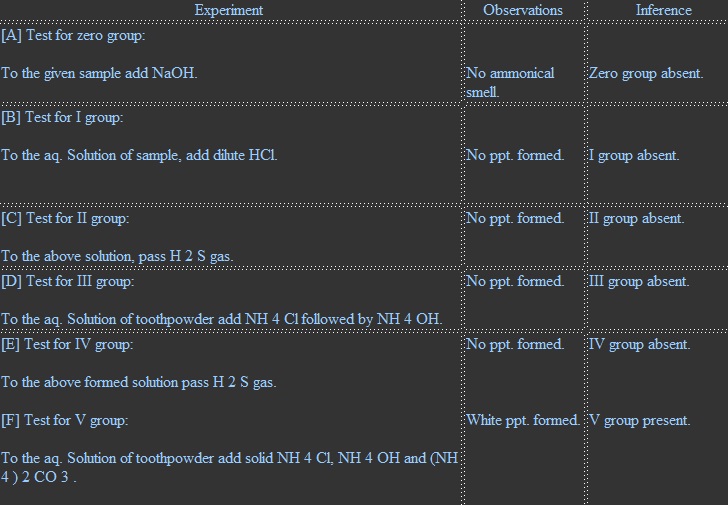





Published on Apr 02, 2024
Aim is to find the Determination of Contents of Tooth Powder/To test the acid and basic radicals in the toothpowder
Toothpowder is a powder used with hands or with a toothbrush to clean and maintain the aesthetics and health of teeth. Toothpowder is used to promote oral hygiene: it can aid in the removal of dental plaque and food from the teeth, aid in the elimination and/or masking of halitosis and deliver active ingredients such as fluoride or xylitol to prevent tooth and gum disease
While the exact formula of each brand of toothpaste is proprietary, most toothpowders contain the same basic ingredients. These include:
Fluoride: Perhaps the most important toothpowders ingredient is fluoride. Fluoride incorporates itself into tooth enamel making your teeth more resistant to acids produced by plaque bacteria, as well as acids found in fruit juices, soda (both regular and diet) and certain foods. In toothpowders, fluoride is found in the form of sodium monofluorophosphate, stannous fluoride, or sodium fluoride.
Abrasives: Abrasives give toothpowders its cleaning power. They remove stains and plaque, as well as polish teeth. Common abrasives include calcium phosphates, alumina, calcium carbonate, and silica. Toothpowders should be abrasive enough to remove plaque and stains, but not abrasive enough to damage tooth enamel. Damaged tooth enamel also causes yellowing as the thinned enamel reveals the yellowish dentin layer below. Over the years, manufacturers have been quietly reducing the abrasiveness of their toothpowders.
Preservatives: Preservatives prevent the growth of microorganisms in toothpowders and eliminate the need to refrigerate toothpowders. Common preservatives include sodium benzoate, methyl paraben, and ethyl paraben.
Flavoring Agents: These are added to improve the taste of toothpowders. You may have noticed that toothpowders have very strong flavoring.This is necessary to cover up the horrid taste of most detergents, especially SLS.
Sweeteners: Sweeteners also improve the taste of toothpowders. Most toothpowder sweeteners are artificial and contribute very little to cavity formation. Saccharin is a common toothpowder sweetener.



The given toothpowder contains anions namely CO32- and PO43- and cations namely Ca2+.
Several of the ingredients in toothpastes are found by some environmentally damaging or hazardous to the personal health.
These ingredients include:
• Artificial flavoring
• Artificial colors
• Triclosan
• Sodium bicarbonate (baking soda)
• Detergents
• Fluoride
• Preservatives such as Methylparaben and Ethylparaben-parabens
• Pyrophosphate
Homemade tooth powders are made by mixing 3 parts baking soda (cleanser) thoroughly with 1 part salt (the abrasive). As a direct result of these concerns, some people have started making their own tooth paste instead, which -while still not completely ecologic due to the use of baking soda- still eliminates much environmentally or health damaging ingredients. Also, commercial toothpowders are made which are less or even non-environmentally damaging. Such preparations are made from herbal resins, propolis and myrrh.